22 Colorized Photos That Show What The 1950s Were Like
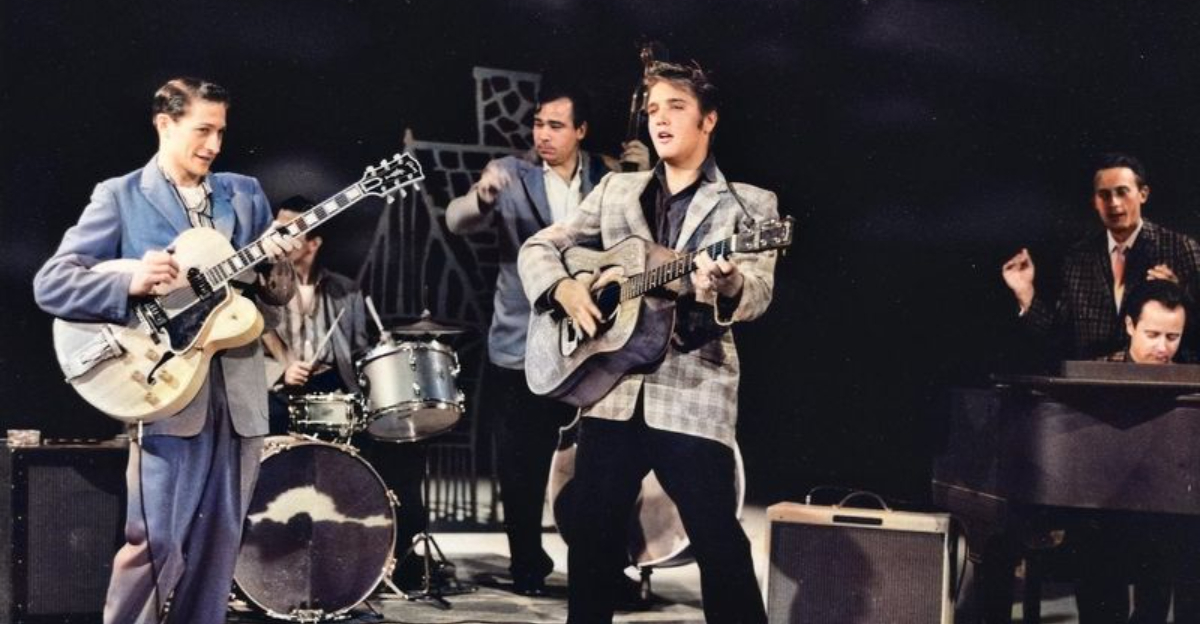
The 1950s wasn’t just a decade — it was a full-blown cultural turning point, bursting with rebellion, reinvention, and rock ’n’ roll. It was the era where Elvis swiveled his way into stardom, teenagers became a marketing force, and suburban dreams were paved with chrome and checkerboard tiles.
Politically and technologically, the world was shifting fast — Cold War tensions, the birth of NASA, and the atomic age all simmered beneath the surface of sock hops and soda fountains.
And while black-and-white images have their charm, seeing the ’50s in colorized photos is like flipping a switch — suddenly, history doesn’t feel so distant. Every thread of a poodle skirt, every neon diner sign, every defiant stare or joyful smile pops to life.
So buckle up and grab a milkshake, because we’re about to take a time-traveling joyride through a decade of unforgettable icons, quiet revolutions, and snapshots that still speak volumes — now in full, glorious color.
1. The Coronation of Queen Elizabeth II (1953)
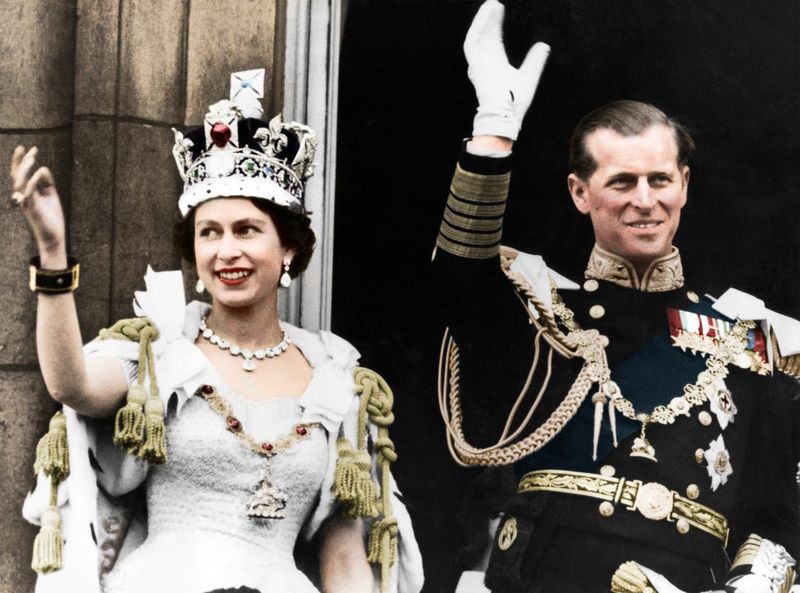
The year was 1953, and the world was about to witness a young monarch stepping into a role that would define an era. Queen Elizabeth II, at the tender age of 27, donned the most exquisite crown jewels, and in a moment as grand as the jewels themselves, became the Queen of England. The coronation was the first to be televised, allowing millions to see the pageantry and tradition unfold in real-time.
Fast forward to today, and thanks to the magic of colorization, we can almost feel the texture of her robe, the weight of the crown, and the awe of the crowd gathered within Westminster Abbey. This event wasn’t just a royal affair; it was the birth of a cultural icon, a figure who would shape the latter half of the 20th century.
Seeing this moment in color adds layers of depth and emotion, making history feel tangible. It’s a reminder of the continuity of tradition and the beginning of a new chapter in British history.
2. Marilyn Monroe’s Iconic Subway Grate Scene (1954)

Picture this: a white dress, a subway grate, and a gust of wind that created one of the most famous images in pop culture history. It’s September 1954, and Marilyn Monroe is filming the scene that would immortalize her as the ultimate sex symbol. The Seven Year Itch gave us more than just a plot twist; it gave us an image that screams 1950s Hollywood glamour.
Colorization does more than just brighten the scene; it brings out the electric charisma of Monroe, whose smile lit up cinemas and whose presence was larger than life. You can almost hear the city noise and feel the summer night air.
The image captures not just a moment in a movie, but an emblematic piece of Monroe’s legacy. Seeing her in full color lets us appreciate her charm and the cheeky playfulness that remains timeless. It’s as if we’re standing right there on that New York sidewalk, capturing the moment, breath held, as her dress flutters up and history is made.
3. Rosa Parks Refusing to Give Up Her Seat (1955)
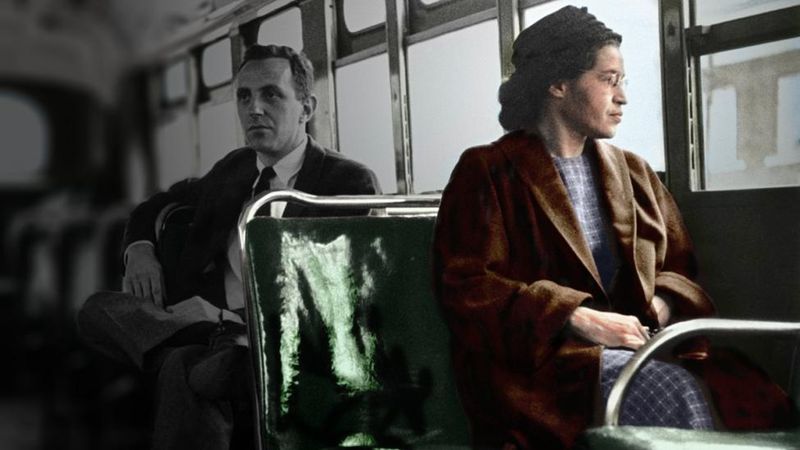
In a world where the seats at the front of the bus were a battleground for civil rights, one woman’s quiet defiance spoke volumes. Rosa Parks’ refusal to surrender her seat in 1955 sparked a movement that would change the course of history. It was a simple act, yet the courage it required was monumental.
The colorization of this pivotal moment adds a richness to the narrative. The bus, the passengers, and Parks herself are brought to life in hues that make the struggle for equality feel immediate and personal.
Her steadfast gaze and resolute posture are as impactful today as they were then, reminding us of the power of individual action. The image is a powerful testament to the strength of the human spirit and the enduring fight for justice. It’s history not just remembered, but relived, as we see it unfold in full, vibrant color.
4. Elvis Presley’s First Appearance on The Ed Sullivan Show (1956)

Hold onto your blue suede shoes, because we’re about to relive the moment Elvis Presley shook up the world. In 1956, Elvis made his first appearance on The Ed Sullivan Show, and let me tell you, America was all shook up. Young, electrifying, and scandalously charismatic, he brought rock ‘n’ roll into living rooms and hearts across the nation.
The colorization of this performance captures the essence of a cultural shift. You can almost see the glint in Elvis’s eyes as his hips moved and the screams of fans filled the studio. The black-and-white TVs of the time didn’t do justice to the vibrant energy he exuded.
With each strum of his guitar and twist of his lips, Elvis didn’t just perform; he revolutionized. The added color injects life into the scene, making us feel like we’re part of the audience, experiencing the thrill of rock ‘n’ roll’s arrival firsthand. It’s not just a show; it’s a seismic event in musical history.
5. The Launch of Sputnik by the USSR (1957)

In 1957, a shiny little satellite called Sputnik beeped its way into the history books, and suddenly all eyes were on the sky. The USSR’s launch of Sputnik kickstarted the Space Race, making it clear that science fiction was becoming reality. This was the dawn of a new era, one where the final frontier was no longer the stuff of dreams.
Colorizing this moment adds an uncanny sense of immediacy and wonder. The metallic sheen of the satellite against the deep, vast expanse of space is breathtaking. You can almost feel the anticipation and tension that gripped the world as nations watched in awe—and a bit of fear.
Seeing Sputnik in color gives a sense of the technological marvel it truly was, a tiny beacon orbiting Earth, marking humanity’s first real step into the cosmos. It’s a reminder of both the incredible advancements we can achieve and the ever-present competitive spirit that drives innovation.
6. James Dean Leaning on a Car (1955)
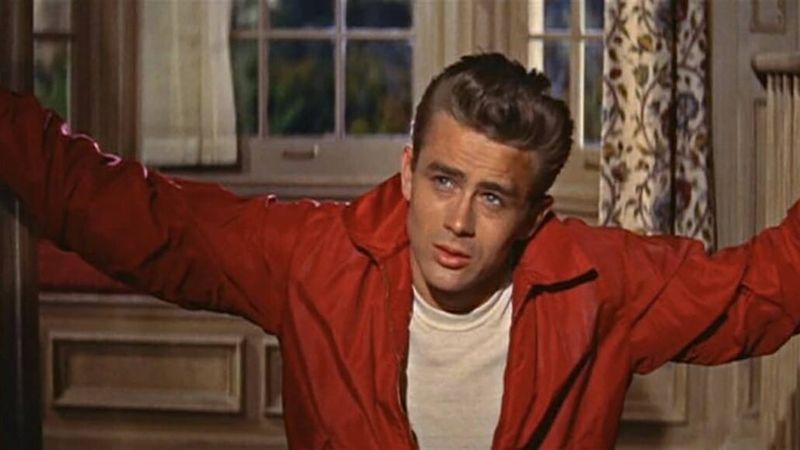
James Dean, the epitome of cool rebellion, captured hearts and imaginations with just a lean on a car. In 1955, this moment became iconic, embodying the restless spirit of a generation eager to break free from conformity. Dean was more than just an actor; he was a symbol of youthful discontent and the allure of the outsider.
Colorization transforms this image from a moody black-and-white scene into a vibrant, living snapshot of 1950s rebellion. The leather jacket pops, the car gleams, and Dean’s intense gaze speaks volumes.
This image reminds us why Dean remains a cultural icon, even decades after his untimely death. He wasn’t just leaning on a car; he was leaning into the future, with all its uncertainties and possibilities. The color breathes life into this moment, making it not just a photograph, but a piece of living history.
7. The “Kitchen Debate” Between Nixon and Khrushchev (1959)
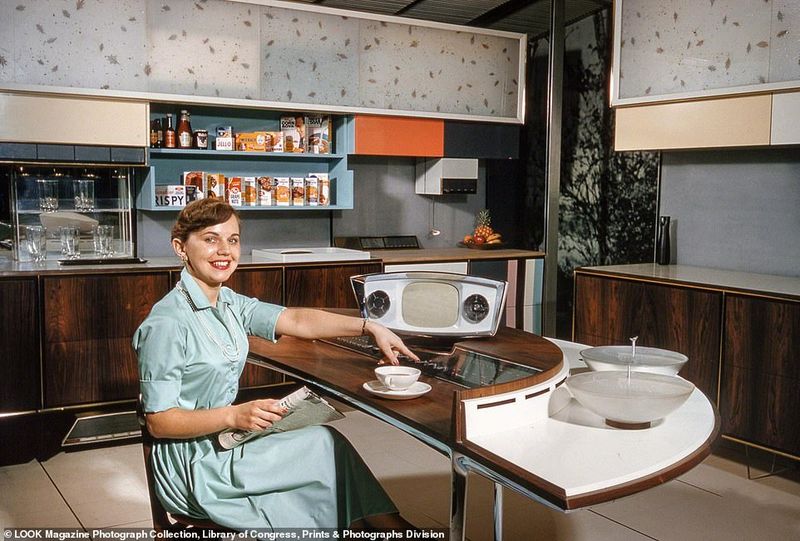
Ah, the 1950s—a time when political debates could happen in the most unexpected places. Like, say, a model kitchen. In 1959, Vice President Richard Nixon and Soviet Premier Nikita Khrushchev squared off in the “Kitchen Debate,” a symbolic clash of ideologies with all the intensity of a Cold War thriller.
Seeing this moment in color highlights the absurdity and significance of two world leaders debating capitalism versus communism amidst pastel appliances and checkerboard floors. The tension in their expressions is palpable, even as they’re surrounded by the quintessential symbols of domestic bliss.
This image captures more than just a political debate; it encapsulates an era of global tension and cultural exchanges. Colorizing the scene brings out the vivid contrasts of the era’s ideologies, making it a snapshot of history that’s as vibrant as it is surreal.
8. H-Bomb Testing at Bikini Atoll

In the 1950s, the atomic age was not just a concept; it was a reality that loomed large over the world. H-bomb testing at Bikini Atoll demonstrated both the incredible power of atomic energy and the terrifying potential for destruction. The iconic mushroom cloud became a symbol of this new era, as awe-inspiring as it was horrifying.
Colorizing these images adds a chilling vibrancy to the already daunting spectacle. The fiery hues of the explosion contrast starkly with the serene blues of the ocean, intensifying the surreal beauty and danger of the moment.
These tests were more than just scientific experiments; they were harbingers of an age where the threat of nuclear annihilation was ever-present. Seeing these explosions in color reminds us of the delicate balance between technological advancement and ethical responsibility, a balance that continues to challenge us today.
9. The Montgomery Bus Boycott (1955–56)

The Montgomery Bus Boycott of 1955–56 was more than just a protest; it was a turning point in the Civil Rights Movement. When Rosa Parks refused to give up her seat, it wasn’t just a personal stand; it ignited a city-wide boycott that would last over a year. The streets of Montgomery became a stage for unity, determination, and change.
Colorizing this event brings the courage and resilience of the participants into sharp focus. The vibrant hues of their clothing, the intensity in their expressions, and the signs they carried all come alive, amplifying the impact of their stand against injustice.
This moment in history is a testament to the power of collective action and the relentless pursuit of equality. The color adds warmth and life to the scene, making it a vivid reminder of the sacrifices and victories that paved the way for future generations.
10. First Barbie Doll Released (1959)

Step aside, fashionistas—the original style icon has arrived. In 1959, the first Barbie doll made her debut, and little did we know, she was about to redefine what it meant to be a toy—and a role model. With her chic wardrobe and endless careers, Barbie wasn’t just a doll; she was a revolution in a box.
Colorizing Barbie brings out the vibrancy of her personality and the boldness of her design. Her black-and-white striped swimsuit suddenly feels fresh, and her blonde hair practically pops off the shelf.
This doll was more than a plaything; she was a cultural phenomenon that encouraged girls to dream big. Barbie was ready for the Malibu Dreamhouse, the moon, and beyond. The introduction of color highlights the impact of her debut and the legacy she continues to hold in the world of toys. She’s not just a doll—she’s history in living color.
11. Disneyland Opens in California (1955)
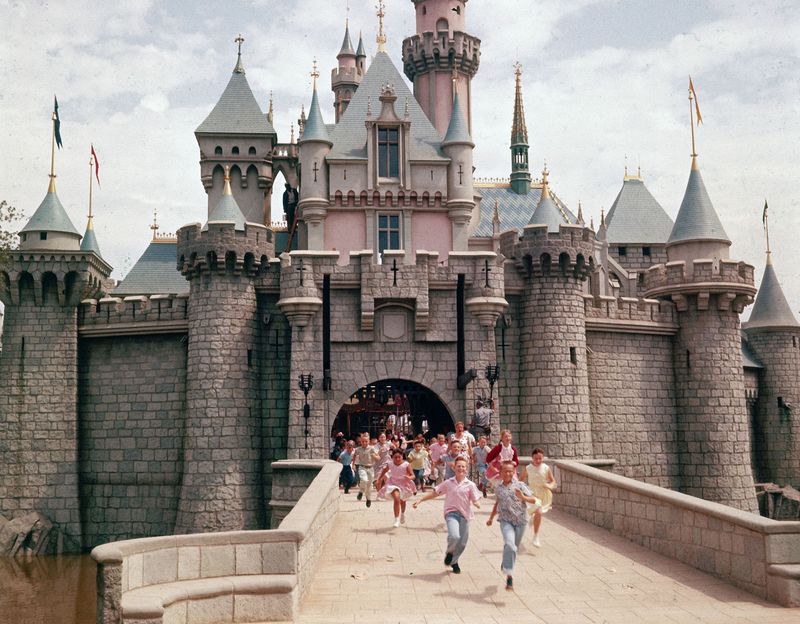
When Disneyland opened its enchanted gates in 1955, it wasn’t just a theme park—it was a portal to a world where dreams came true, and reality took a backseat. Walt Disney’s vision of a magical kingdom burst into life, complete with castles, characters, and enough whimsy to last a lifetime.
Colorizing those first moments at Disneyland adds a layer of magic you can almost taste. The vibrant hues of Main Street USA, the smiles on the children’s faces, and the wonder in their eyes all come alive in a way that black-and-white simply can’t capture.
From the first spin on the teacups to the fireworks lighting up the night sky, Disneyland was, and remains, a place where imagination reigns. Seeing it in color reminds us of the timeless allure of the happiest place on Earth and the joy it continues to bring to generations.
12. Chuck Berry Playing His Gibson on Stage
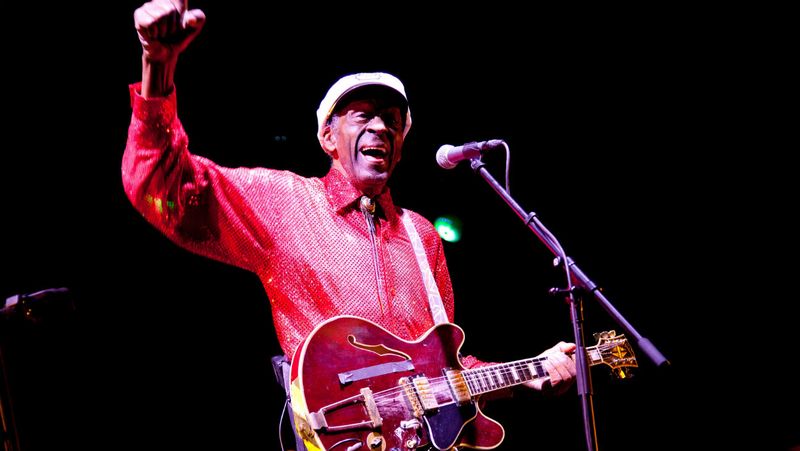
There’s rock, there’s roll, and then there’s Chuck Berry. Nobody could make a guitar sing quite like him, and in the 1950s, he was the maestro of the stage. His duck walk was as legendary as his riffs, and seeing him perform was like watching history in the making—one electrifying note at a time.
Colorizing Chuck Berry’s performances adds a jolt of energy that matches his music. The vividness of his stage presence, the gleam of his guitar, and the fire in his performance all come to life, making it feel like you’re right there in the front row.
Berry wasn’t just playing music; he was crafting anthems for a generation, paving the way for future rock legends. The color in these images helps capture the essence of a man whose influence on music is as enduring as the songs he played. It’s not just a performance; it’s a rock ‘n’ roll revelation.
13. The Rise of Television
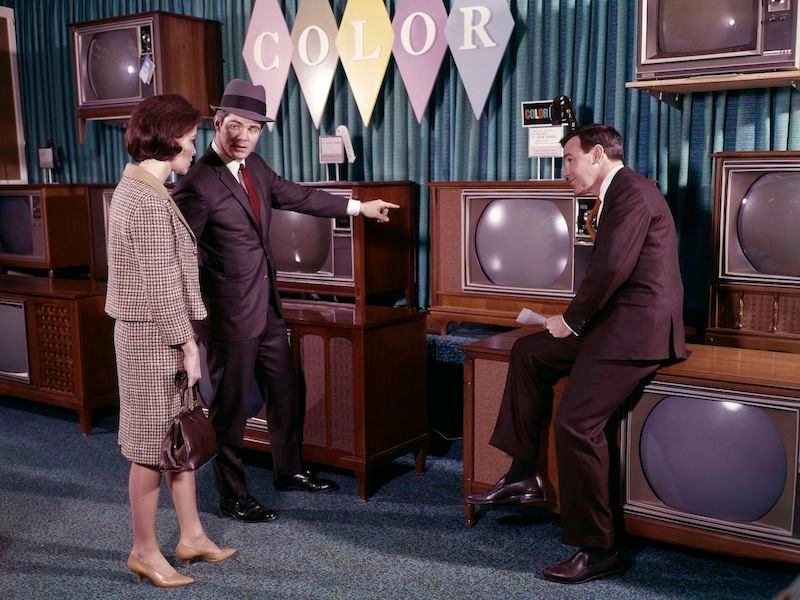
Television became a staple in 1950s households, transforming the way families spent their evenings. Imagine a cozy living room where the glow of a black-and-white screen brought the world into homes, bridging distances and connecting people to global events and entertainment.
Families gathered nightly to watch shows that have since become classics, fostering shared experiences and discussions. The TV set was more than a device; it was a gateway to imagination and a symbol of modernity.
Fun Fact: The popularity of TV shows like “I Love Lucy” and “The Ed Sullivan Show” helped cement television’s role as a central piece of family life in the 1950s.
14. Joe McCarthy’s Televised Hearings (1954)
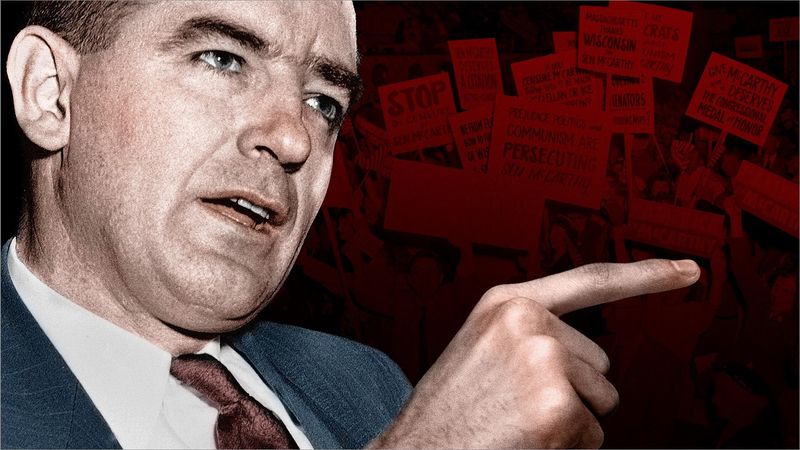
The 1950s weren’t just about poodle skirts and rock ‘n’ roll; there was also the chill of the Red Scare. In 1954, Senator Joe McCarthy’s televised hearings brought the fear of communism into American living rooms, one pointed accusation at a time. It was a time when paranoia ran deep, and suspicion was as common as apple pie.
Colorizing these hearings adds a layer of tension and drama that black-and-white simply doesn’t capture. The stark expressions of those involved, the stacks of papers, and the relentless pursuit of alleged subversives come to life in hues that make the fear tangible.
These hearings weren’t just political theater; they were a reflection of a nation grappling with its identity and the threat of the unknown. Seeing it in color brings us closer to understanding the era’s complexities and anxieties, making history feel both immediate and real.
15. Willie Mays’ “The Catch” in the 1954 World Series
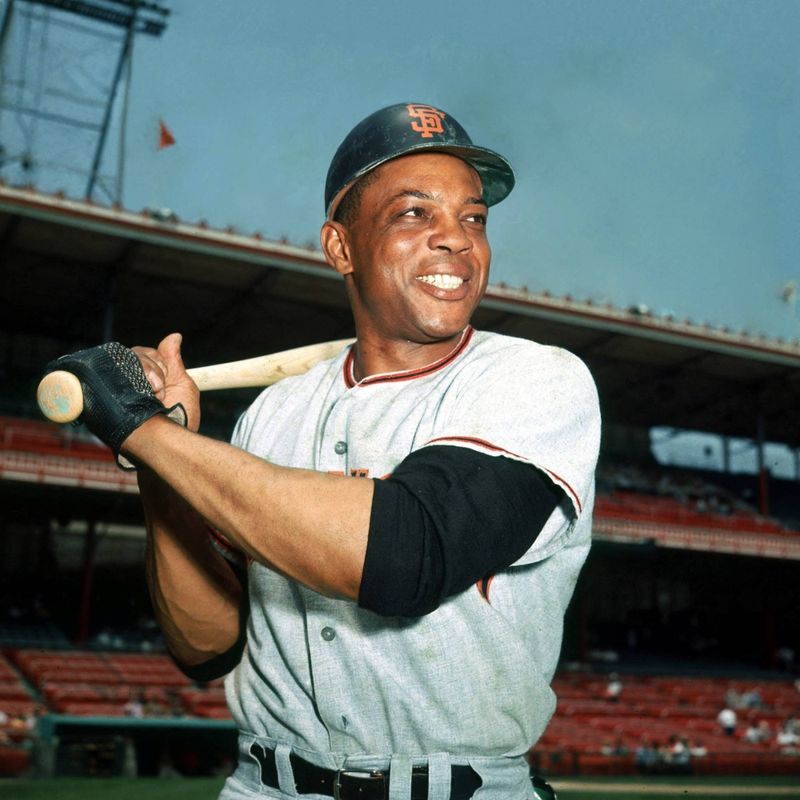
In the annals of baseball history, few moments are as celebrated as Willie Mays’ catch during the 1954 World Series. With the crack of the bat, the ball soared, and Mays sprinted, glove outstretched, his eyes never leaving the prize. What followed was a display of athleticism and grace that became etched in the memories of baseball fans everywhere.
Colorizing this iconic catch adds a dimension of excitement that black-and-white can’t convey. The vibrant green of the field, the intensity in Mays’ stance, and the anticipation of the crowd all come alive, turning the moment into a cinematic triumph.
This wasn’t just a catch; it was a masterpiece of precision and skill, a testament to the magic of America’s pastime. Seeing it in color reminds us of the enduring legacy of Mays and the unforgettable impact of a single, extraordinary play.
16. Grace Kelly’s Wedding to Prince Rainier III (1956)
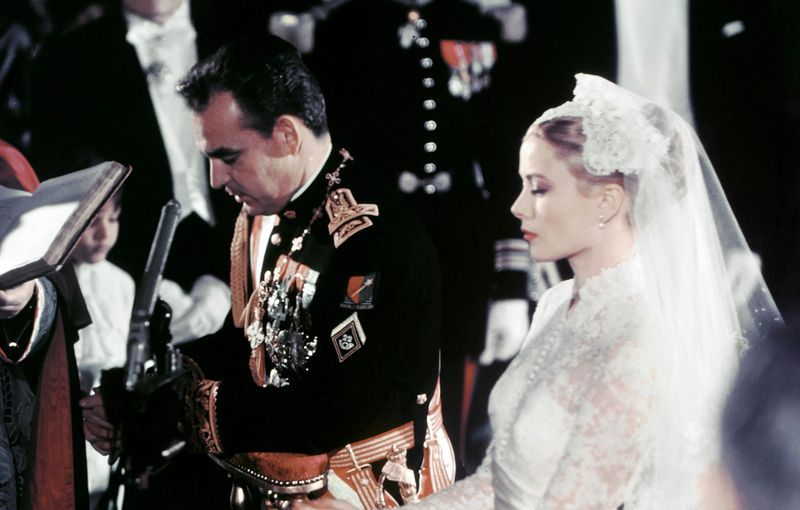
When Hollywood glamour met royal elegance, the world stopped to watch Grace Kelly marry Prince Rainier III in 1956. It was a fairy tale come to life, complete with a stunning princess bride, a royal groom, and a wedding that would be remembered for its beauty and grandeur.
Colorizing this event adds a breathtaking vibrancy to what was already a dazzling spectacle. The intricate details of Kelly’s gown, the splendor of the Monaco setting, and the palpable sense of romance all come alive, making it feel as if we’re guests at the royal affair.
This wedding wasn’t just a union of two people; it was a merging of Hollywood and royalty, a storybook event that captivated the world. Seeing it in color reminds us of the timeless allure of love and the magic that happens when dreams become reality.
17. The Opening of the First McDonald’s Franchise (1955)
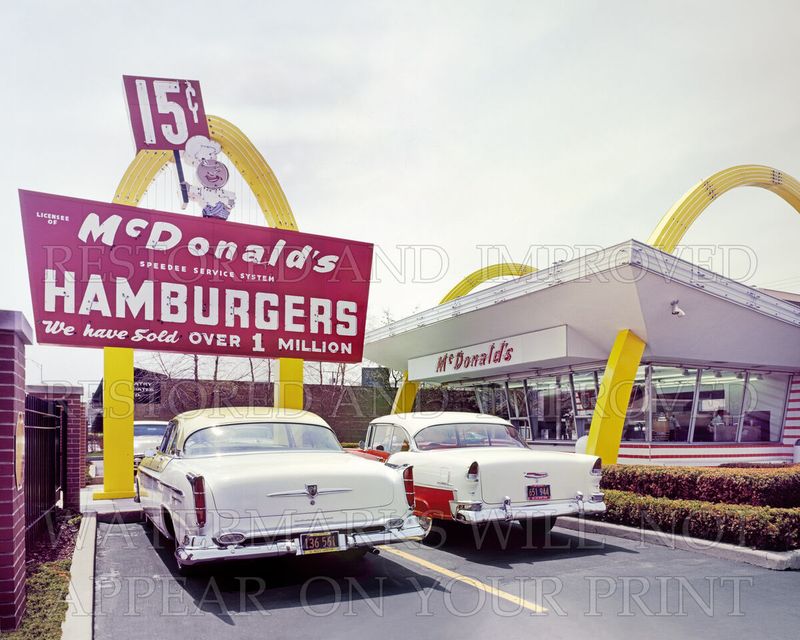
In 1955, fast food got a makeover, and it came with golden arches. The opening of the first McDonald’s franchise in Des Plaines, Illinois, was the beginning of a culinary revolution that would change the way America—and the world—dined. Suddenly, hamburgers, fries, and milkshakes were not just food; they were an experience.
Colorizing this moment adds a sense of nostalgia and excitement to the birth of fast food culture. The vibrant reds and yellows of the branding, the bustling activity of eager customers, and the novelty of a quick meal all come to life, making it feel like we’re stepping back in time.
This wasn’t just about burgers; it was about convenience, innovation, and the American way of life. The color adds a richness to the scene, highlighting the impact McDonald’s had on dining and culture, one value meal at a time.
18. The Launch of NASA (1958)

Space, the final frontier, became a little less distant with the launch of NASA in 1958. Born from the Space Race, NASA was America’s answer to the Sputnik challenge, a promise to explore the cosmos and reach for the stars. This was the beginning of a journey that would take us to the moon and beyond.
Colorizing this moment brings out the excitement and innovation that defined the era. The bustling control center, the keen faces of scientists and engineers, and the palpable sense of possibility all come alive, painting a picture of a nation on the cusp of discovery.
NASA’s launch wasn’t just an organizational milestone; it was a declaration of intent, a commitment to exploration and understanding. Seeing it in color reminds us of the boundless potential of human ingenuity and the dreams that propel us ever forward.
19. The Hungarian Revolution (1956)
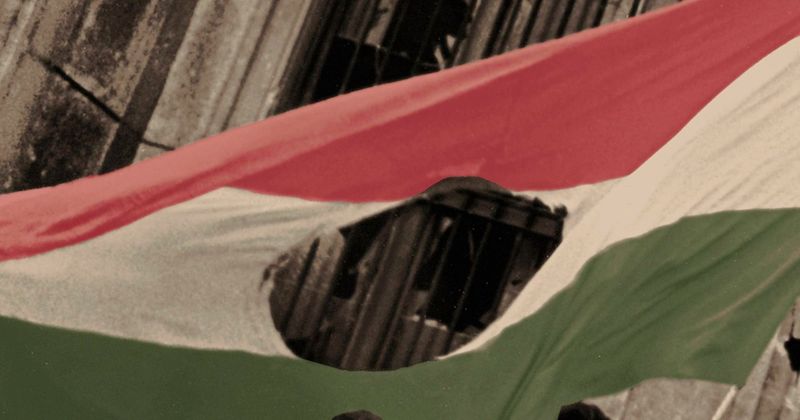
In 1956, the streets of Budapest were alive with a cry for freedom. The Hungarian Revolution was a bold stand against Soviet oppression, a moment when a nation dared to dream of independence. It was a time of courage, sacrifice, and an unwavering belief in the power of the people.
Colorizing this event adds a vivid intensity to the scenes of defiance and hope. The flags waving, the fervor in the eyes of the revolutionaries, and the backdrop of a city yearning for change all come to life, making the struggle feel both immediate and real.
This revolution wasn’t just a fight for political autonomy; it was a testament to the resilience of the human spirit. Seeing it in color reminds us of the enduring quest for freedom and the sacrifices made in its pursuit. It’s a powerful reminder of the past and a call to never forget the price of liberty.
20. “In God We Trust” Added to U.S. Currency (1957)
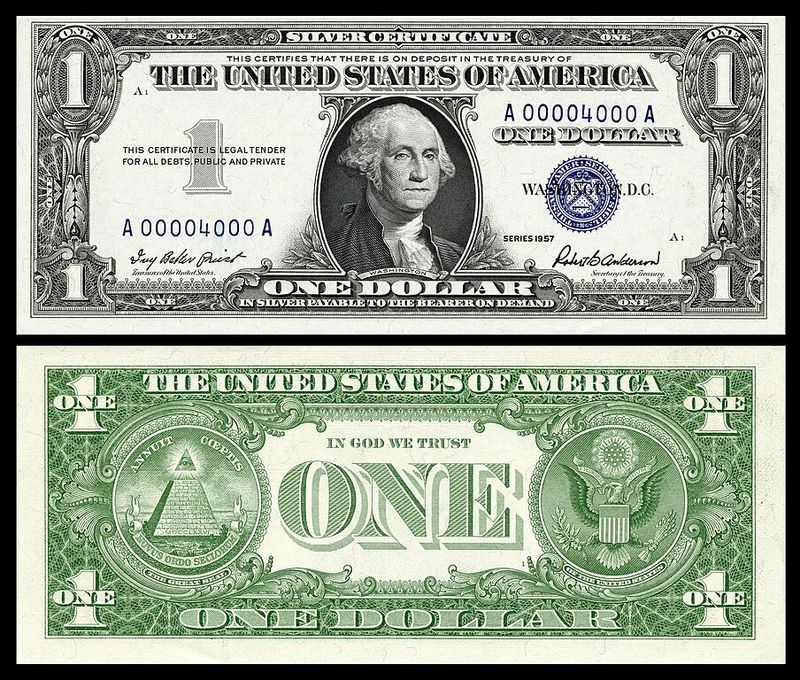
In 1957, a quiet yet powerful change was made to the fabric of American life. The phrase “In God We Trust” was added to U.S. currency, embedding a national ethos onto the very money that changed hands every day. It was more than just a motto; it was a reflection of the era’s values and beliefs.
Colorizing this change adds a nuanced depth to the currency and its significance. The intricate details of the bills, the boldness of the phrase, and the sense of identity it conveys come to life, offering a glimpse into the cultural shifts of the time.
This wasn’t just about money; it was about ideology, faith, and the messages we choose to carry forward. Seeing it in color reminds us of the symbolic power of words and the lasting impact of choices made in the past. It’s a reminder of history’s subtle changes, forever captured in our pockets.
21. The Debut of Playboy Magazine’s First Centerfold (1953)

In 1953, the publishing world was turned on its head with the debut of Playboy Magazine’s first centerfold. And who better to set the stage than Marilyn Monroe herself, reclining coyly and launching a cultural phenomenon. It was more than just a magazine spread; it was the beginning of a new era in publishing and popular culture.
Colorizing this iconic image adds a layer of allure and provocation that black-and-white only hinted at. Monroe’s charm, the tasteful yet daring pose, and the groundbreaking nature of the publication all come to life, reminding us of the boldness of the era.
This wasn’t just about a magazine; it was about challenging taboos, redefining beauty, and launching an empire that would influence generations. Seeing it in color captures the essence of Monroe’s timeless allure and the audacity of a publication that dared to change the game.
22. Alfred Hitchcock Filming Vertigo (1958)
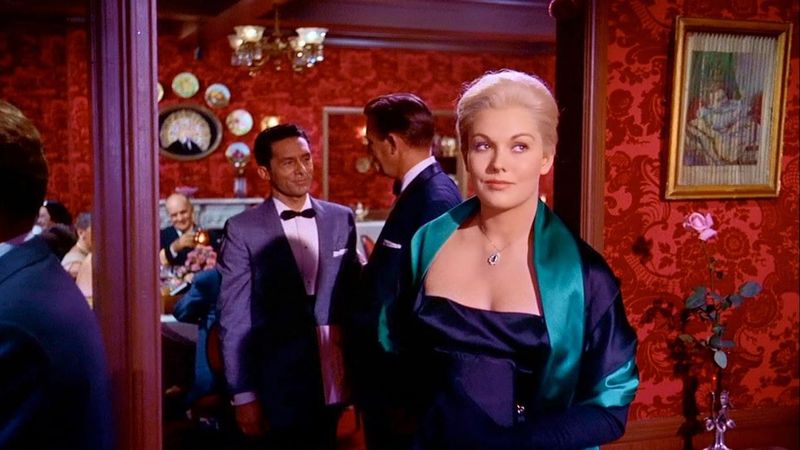
In 1958, Alfred Hitchcock was in his element, weaving suspense and intrigue into every frame of Vertigo. Known for his meticulous attention to detail, Hitchcock was a master at crafting films that left audiences on the edge of their seats, and Vertigo was no exception.
Colorizing this behind-the-scenes moment adds a richness to the film’s production, highlighting Hitchcock’s focused demeanor and the creative energy that buzzed on set. The intricate set designs, the intensity in Hitchcock’s eyes, and the collaborative spirit of the crew all come alive, painting a picture of cinematic genius at work.
This wasn’t just about telling a story; it was about creating a visual and emotional experience that would stand the test of time. Seeing it in color reminds us of the artistry and dedication that went into making one of the most visually stunning films ever made.
